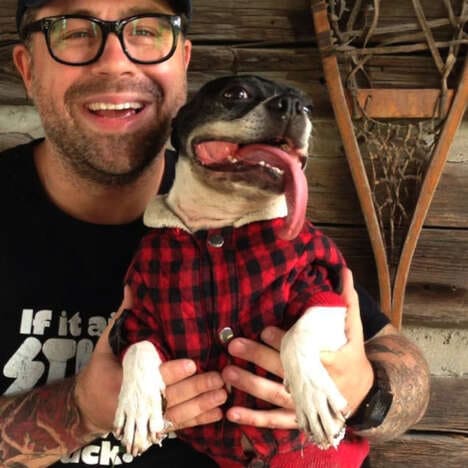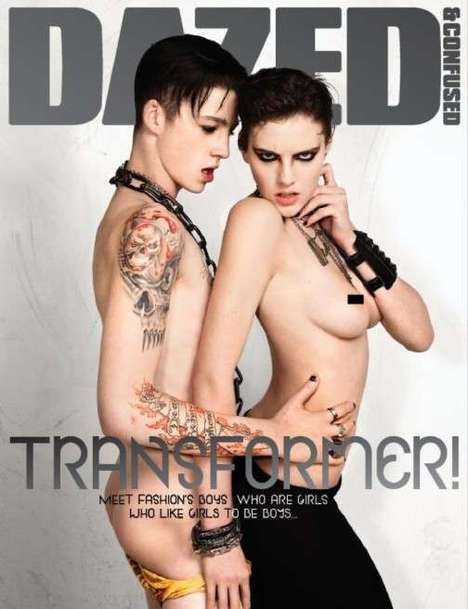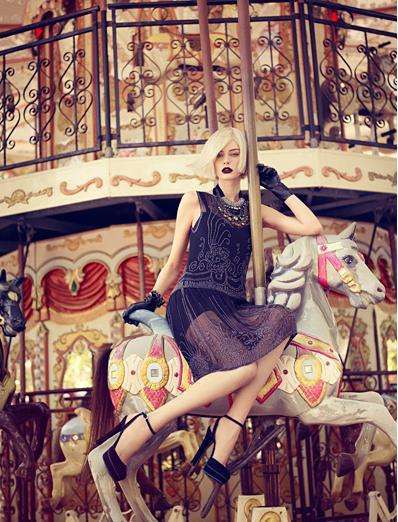Creating a Culture That Learns from Failure
Royal Nasager, Director of Marketing, Bluenotes
Related Trend Reports
Art & Design, Design, Fashion, Fashion for Men, Hip Fashion, Life, Lifestyle, Luxury, Luxury Fashion, Marketing, Media, Photography, Pop Culture Royal Nasager is the Director of Marketing at Bluenotes and is responsible for all aspects of the brand, most predominantly, taking the buying team’s vision, and bringing those concepts to life in a “relevant, meaningful way” for their customer. Bluenotes is a Canadian lifestyle clothing brand that was created in 1984. The brand continues to be innovative by creating a culture that is exceptionally collaborative, as partnership and teamwork become an integral part of the company's corporate values.
Royal Nasager is the Director of Marketing at Bluenotes and is responsible for all aspects of the brand, most predominantly, taking the buying team’s vision, and bringing those concepts to life in a “relevant, meaningful way” for their customer. Bluenotes is a Canadian lifestyle clothing brand that was created in 1984. The brand continues to be innovative by creating a culture that is exceptionally collaborative, as partnership and teamwork become an integral part of the company's corporate values.Four Questions with Royal Nasager
1. Do you have specific rituals for re-setting your team to be creative?
Not specifically; we avoid stagnation and monotony through a number of practices. We’re always experimenting, evolving roles, and trying new things. Every creative team hits walls, but if you have a culture that is founded on inventiveness, it can be mitigated. The very practice of creating rituals to inspire creativity can seem counter-intuitive. Often, the greater challenge is being honest enough with yourself to identify to those moments where you’re in a rut. We see our being immersed in the market place, youth culture and the fashion world, as an integral part of understanding the fashion business.
2. Has there ever been an instance where another industry has influenced an innovation at your company?
We take cues from everywhere and have an amazing breadth of talent, and do our best to utilize that diversity. Essentially, we are a full-service, in-house creative and marketing agency with one client: Bluenotes. We take inspiration from everywhere, whether it’s interior design, street art, or even technology. As an example with technology: the simplicity of design, tone and manner ‘Apple’ uses is inspiring to us, even though it’s a completely different industry.
3. How do you identify trends? What resources does your team use to spot trends and consumer insights?
Regular shopping trips, travel, festivals, and interacting with our demographic are ways we identify trends. Engaging with culture is imperative. Like any diligent creative office, we leverage a number of tools to help inform our teams, but there is no substitute for being on the ground, and taking it in firsthand. It’s vital to know what’s relevant to our customers, but we have to be forward-looking enough to anticipate where they’re going as well.
4. What is the biggest challenge you face when innovating?
In any industry, the fear of failure always looms large, potentially hindering creativity and innovation. Creating a culture where failure is embraced is key. Taking chances can be costly; the trick is to mitigate the risk and to create safe-zones. Making mistakes is the by-product of trying new things – the key is to learn from them and not make them again.
Featured Articles

Androgenous Expression
Increasingly androgynous innovations bridge the gap between genders

Architectural Aesthetic
Cold and controlled sharp looks take over fashion

Cosmic Couture
Space-inspired design puts a galactic spin on clothing and accessories

Flapper Fashion
Couture sees a resurgence of the Roaring 20s

Baby Doll Design
Fed up with the ubiquity of androgynous fashion, women revert to a girly style

Action Fashion
Animated editorials breathe life into garments and engage online viewers

DIY Fashion
Rediscovering the art of personal clothing creation

Aggressive Couture
Chains, studs, and leather give our wardrobes a hardened edge